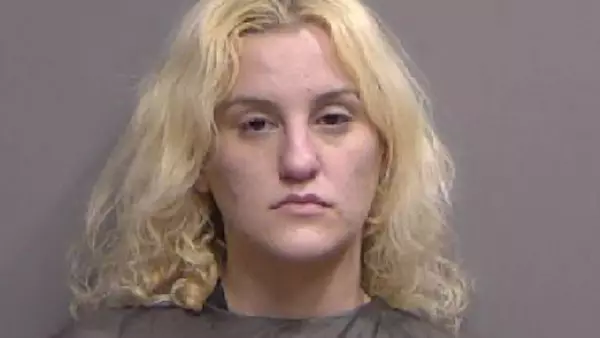Since the pandemic first found its way into our consciousness, Melbourne emergency physician Stephen Parnis has been working on the crest of every COVID-19 wave.
His job demanded long hours: treating patients, keeping across new therapies and life-saving strategies, while managing the impact of surging virus numbers and multiple lockdowns on overworked hospital staff and grieving families.
Every day as he went to work, Dr Parnis knew the virus could take the upper hand, and month after month he carried with him the weight of two questions: how many lives could be saved today? How many would be lost?
Then three months ago, Dr Parnis hit the wall.
"I was burned out. For most of us in healthcare, the pandemic has posed the biggest single challenge of our entire careers and mine began in 1992," says Dr Parnis, a former vice-president of the Australian Medical Association. "I've done a lot of soul searching, looking at where my limits lie and asking how I sustain myself through this?"
For the first time since 1995, Dr Parnis took three months' leave.
"I wasn't myself and if I'd continued doing what I was doing I might have ended up having some sort of flame out," he admits. "It was important to have time and space. My GP and my psychologist have been an important part of that time, but so have trusted friends and colleagues."
The key lesson, Dr Parnis says, was understanding how to lower his expectations on himself: "I don't have to be perfect. My colleagues don't have to be perfect. We don't have to have all the answers. We just need to know where to look for them".
It is ironic that as Dr Parnis prepares to return to work tomorrow, Australia has the highest number of COVID-19 infections, hospital admissions and deaths of any time during the pandemic. His medical colleagues remain under pressure.
"My timing is impeccable," he says with irony. "I'm coming back at it at a time when things are in some ways diabolical. I'm humbled by the support that my colleagues have given me and a little shocked by the numbers of people who have come to me saying they have felt the same way."
On Friday, Australia recorded 44,203 new cases of COVID-19 in the previous 24 hours with the nation’s total caseload now nudging 10 million. The hospital system is juggling 5,122 patients with COVID-19, including 162 in ICU.
The saddest statistics of all are the deaths. A total of 157 people died with COVID-19 across Australia on Friday. The pandemic has taken the lives of 11,669 Australians so far.
"I would say the hospital system is holding its head above water, but only just," says Dr Parnis, who met with hospital colleagues last week for an update before his return.
The experts contacted for this story — from frontline doctors like Dr Parnis, to epidemiologists, virologists and health policy researchers — agree that the trajectory of this wave of the virus is steep, and the peak could still lie ahead.
Modelling predicts August will see a significant further rise in cases before the curve begins to fall again.
Deakin University's chair in epidemiology Catherine Bennett says the week ahead will offer a clearer idea of how long this wave may last.
"I think we will know in the next week or so whether these are true plateaus forming now," she says, noting that every state is different," Professor Bennett says.
BA.5 has rewritten the rules
COVID-19 has forced us to grapple with so much rapid change — from lockdowns to the "new normal" — that it is hard to believe only this time last year state premiers were still fronting the media each morning with detailed COVID-19 updates.
Double doughnut days remained the goal back then and lockdowns were an ever-present possibility. Australians under 40 were still not eligible for vaccination.
On July 31, 2021, in NSW for example, the state was deep in a lockdown that ultimately lasted more than 15 weeks. In the previous 24 hours, 210 cases were recorded and contact tracing was still attempted. The pandemic's total cases in NSW had reached just 8,725 infections.
Fast-forward a year and, on Saturday, NSW had 177,013 active cases across the state, with 2,210 of those in hospital and 68 in intensive care. In the 24 hours to Friday afternoon, 46 people died with COVID-19.
In hindsight, concern over such low figures, when compared with our current situation, feels almost overblown.
Yet the disparity says a lot about both how far we have come, and how far we have to go.
Without vaccines and lockdowns, many, many more people would have died during last year's wave, says Professor Bennett.
But this year, in spite of the rollout of vaccines and offers of third and fourth booster doses, the pressure on the hospital system is intensifying as the rise of the highly transmissible BA.5 variant — potentially as infectious as the most contagious viruses on Earth, measles and chickenpox — has rewritten the rules yet again.
New data suggests more than 46 per cent of Australians have had a COVID-19 infection, a figure that is likely to be a significant underestimation, Professor Bennett believes.
'The next epidemic'
Notwithstanding the deaths — and those who have suffered as a result of their infections — many have been tempted to ask why we still worry about COVID-19, given widespread experience of only mild disease. The fear of what a COVID-19 infection might mean has dissipated for some who ask: "Isn’t it time to just get on with things?"
The experts are resolute that this approach remains cavalier. And the potential for pressure on the healthcare system is only one reason.
The most uncomfortable questions are:
- Who will become the casualties of this fresh wave?
- Will it be the elderly who, despite vaccination and the availability of new oral anti-viral medication, are not able to fight off the virus?
- Will it be the teens and 20 or 30-somethings who often drive virus transmission being infected for the second or third time with long-term ramifications still unknown?
- Will it be children receiving treatment for chronic conditions like rheumatoid arthritis that lowers their immunity?
- Will it be women who are emerging as the cohort most likely to suffer long COVID-19?
When you talk to these experts, leaders in their fields, who have devoted well over two years and thousands of hours to trying to understand SARS-CoV-2 it is uncanny how frequently one phrase continually comes up: "We just don't know."
"The fact is that we've got more people dying from this virus than any other virus. If things keep going in this direction COVID could be the single greatest cause of death, exceeding heart disease," Dr Parnis says. "That's unacceptable. How bad does it get? What are the long-term consequences? There are a lot of things we just don't know."
Sarah Palmer is a virologist — and co-director of the centre for virus research at The Westmead Institute for Medical Research and professor in the faculty of medicine and health at The University of Sydney — says it is the unknowns that harbour some of the greatest potential threats, arguing that, without care, rampant infection and reinfection threatens to make long COVID "the next epidemic".
Professor Bennett agrees with Dr Parnis and Professor Palmer that, if COVID-19 numbers continue to explode, it is going to become an important cause of death and disability in Australia, driven simply by the maths: a small risk multiplied over a large, infected population still delivers concerning numbers.
"To say it's disappointing is an understatement," Professor Bennett says, pointing out the BA.5 variant that is driving the spike in infections is escaping the immunity built up — by those who contracted BA.2 — more efficiently than hoped.
"We've got more than half the population vaccinated but people who are in the firing line of the virus are getting multiple infections," she says.
"That keeps the force of infection up and it pushes out into the community and is sustained. Although you might have very low risk if it's sustained week after week, at some point you might have that unlucky exposure."
What are we going to do, Professor Bennett asks.
"We want to encourage people to stop spreading the virus but we don't want to go back into lockdown because what are you waiting for then? You have to stay there for the rest of your lives. It just doesn't work."
While the Omicron variants have proven persistent and resistant, Bennett says we should be grateful that "it's not a brand new variant".
"We're not going through that moment when we have absolutely no idea how the virus is going to behave," she says.
"Omicron is sitting in place longer than other variants have managed to do and that that may be a good thing. As long as it doesn't evolve into something we're more worried about."
The problem, she points out, is that, while BA.5 is spreading rapidly through the population, the opportunity for the virus to mutate again remains a threat.
Some good news — a variant-proof booster is near
Just as the capacity for SARS-CoV-2 to mutate is one of its most concerning features, it is also driving some of the most-exciting developments in treatment.
And, while so much of the news around COVID-19 continues to feel bleak, a small bright spot is emerging in the field of variant-proof boosters and vaccines.
When SARS-CoV-2 arrived in Australia back in 2020, Professor Palmer suspected immediately what it might be capable of doing.
Professor Palmer had spent large portions of her career working with HIV, a ribonucleic acid (RNA) virus she describes as "the most genetically diverse in the world".
And her HIV work made her "worry from day one" about SARS-CoV-2, which is also made from RNA molecules.
"When I saw that it was an RNA virus, I knew we would start seeing variants," she says.
But as Professor Palmer reflected on the knowledge she had built up from her HIV research, she had an idea. Every virus has portions that remain the same no matter what variant emerges.
Professor Palmer reasoned that, if she could determine which portions of COVID-19 remained the same across different variants, then this information would offer potential to create a vaccine or booster that targeted these stable portions, meaning any variant that emerged going forward could be brought down by what she calls a "universal booster".
Since then Professor Palmer and her colleagues — along with teams led by Colin Pouton from Monash University and Ranjeny Thomas from the University of Queensland — have been working on this one-shot wonder.
And just last week there was a breakthrough.
Using code generated by Professor Palmer's team, Professor Pouton's Monash team has successfully created an mRNA "construct" of the protein segments the virus uses to replicate.
There's a long path ahead, but this mRNA construct can now be tested, first in a cell culture. Professor Thomas's team can then test the construct in a mouse model containing the cells of humans who have had previous COVID-19 infections.
What Professor Palmer and her collaborators are hoping is that the mRNA will stimulate the immune system's killer T-cells to enhance the antibody response to any variant of COVID-19 that emerges in the future.
It's a huge step forward after more than two years of gruelling research.
"We're super excited and really hopeful that we can develop a very effective universal booster," she says. "But we have a long way to go."
Universal boosters and vaccines are the goal for many vaccine researchers, including those at Pfizer.
An inoculation that never has to be updated is also in development.
Professor Palmer's research is unfolding in parallel with work from scientists around the world, including another University of Sydney team that is collaborating with India's Bharat Biotech and Switzerland's ExcellGene SA to create a universal vaccine designed to protect against all variants.
Led by Jamie Triccas, this research hopes to create what is known as a "protein sub-unit vaccine" containing pieces of COVID-19 variants, that can stimulate the immune system to generate broad protection against all current and future variants of SARS-CoV-2.
Megan Steain, a member of the USYD team, says the vaccine will "future proof" us against SARS-CoV-2 variants.
What do we do now
Returning to the current crisis in hospital admissions and runaway infections, and it's clear that a universal booster or vaccine would be valuable in slowing down the transmission of new variants, offering vulnerable groups added protection, and reducing pressure on the healthcare system.
What do we do while we wait?
Notwithstanding the gobsmacking transmissibility of this variant, virologist Ian Mackay from the University of Queensland says far more should be done on both an individual and government level to take control over that spread.
Associate Professor Mackay is emotional when he speaks about what he sees as a "massive failing of leadership in public health" that is impacting not only lives but also the economy.
He argues that, two years ago, we were asked to follow rules on lockdown and masks, for example, but now "when it actually matters, we've abandoned the public and we've abandoned health and science. It's really frustrating".
Dr Mackay is an advocate of what has been called the "Swiss cheese" model of risk reduction: using layers of intervention to maximise the chance one will prevent transmission.
He sees particular value in investing in air purification — and ramping up communication campaigns to keep the value of masks, distancing and self-isolation when symptomatic — top of mind.
"We're essentially running an unfettered epidemic," Dr Mackay says.
"We held out until everyone got vaccinated and believe everything's hunky dory. We did a great job and prevented deaths in the beginning, but we can't have a vaccine-only strategy. We need a multi-layered approach and the more layers you stack together the better. The goal now must be to reduce transmission."
He's not alone. Professor Bennett, Professor Palmer and Dr Parnis agree. And so does Grattan Institute's program director for health and aged care, Peter Breadon.
"We've got a longer struggle ahead with COVID than we probably hoped," Mr Breadon says.
He is concerned by what he terms "binary mindsets", where positions for or against a particular behaviour become entrenched and are often tied to political affiliations, masking-up being one of particular concern.
He says the time has come for a new COVID-19 literacy campaign to refresh people's understanding of how behaviours like masking or physical distancing can influence their risk of a new infection, quite apart from the need to vaccinate, which is being addressed in a $11.5-million government campaign.
However, Mr Breadon sees vaccine equity as a key area to focus on, pointing out that transmission is higher in some communities than others and, unfortunately, many of those are also more vulnerable.
Along with the rising pressure on hospitals — that can then impact all areas of healthcare — Mr Breadon echoes Professor Palmer's concern about not knowing how multiple infections with SARS-CoV-2 will affect health over the long term.
The evidence so far doesn't look good.
"It shows that with every reinfection you get cumulative health impacts," he says, with increased risk of cardiovascular complications of particular concern. "And that's significant."







